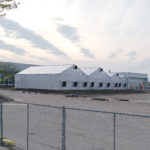Recently, a client hired me to help them draft a new set of policies as part of their compliance with the global chemistry industry’s Responsible Care® initiative. This company is a group management company for a group of companies owned by a larger international conglomerate and the group companies manufacture and distribute a variety of biological and chemical products. This exercise was a chance for me to draw on all of my experience across the many different disciplines that are subject to federal, state and local laws and regulations ranging from building codes to environment, health, safety and security (EHS&S) to genetically modified and non-indigenous organisms.
Below I’ve listed some of my experience in this area. While I don’t consider myself an expert on any of these topics, I have enough of an understanding to ask the right questions and work with a company’s legal, regulatory, and engineering groups to fully understand the relevant laws and regulations.
Contents
Current Good Manufacturing Practices (CGMPs)
My manufacturing operations experience includes work in food and pharmaceutical manufacturing plants subject to US Food and Drug Administration (FDA) CGMP regulations in Title 21 of the Code of Federal Regulations (CFR). I have also been involved with a number of food and pharmaceutical manufacturing plant design projects. In my experience, companies that implement, and actually use, a good quality management system (QMS) based on a solid understanding of the CGMP principles will find it relatively easy to comply with the regulations.
Genetically Modified Organisms
Most of us are familiar with the term Genetically Modified Organism or GMO, as it tends to have a negative connotation in the media. However, genetically modified organisms are now common in both biorefining and bioprocessing. Most of the corn and soybeans processed in the US are GMO. In addition, many of the enzymes used to process agricultural products and many fermentation food and chemical products are made by genetically modified microorganisms. Products marketed as non-GMO or organic have specific legal restrictions on how they are manufactured and what, if any, GMO materials they are permitted to contain. It is therefore important for anyone developing a process or designing a manufacturing plant to have a solid understanding of these regulations.
The specific terms used to describe organisms that have been genetically modified vary. These include “recombinant” as in the widely used NIH Guidelines for Research Involving Recombinant or Synthetic Nucleic Acid Molecules, published by the United States National Institutes of Health (NIH). An organism may be described as “transgenic” if it contains a gene from a different species. In modern biotechnology context, this usually means that the gene was introduced by genetic engineering. However, many of our crop plants are, in fact, transgenic, but the genetic material was introduced through conventional hybridization between species and not by genetic engineering.
In 2003, the Cartagena Protocol on Biosafety to the Convention on Biological Diversity, an international agreement on biosafety as it relates to GMO, became effective. The Cartagena Protocol drafters elected to use the term “living modified organism” (LMO) instead of GMO. They define a LMO as “any living organism that possesses a novel combination of genetic material obtained through the use of modern biotechnology.” They then provide specific definitions of “living organism” and “modern biotechnology” to complete the definition.
My work with genetically modified organisms began in graduate school, where I constructed my own recombinant E. coli strains as part of my graduate research. The Novo Nordisk industrial enzyme plant that I worked at used recombinant microorganisms to manufacture many of the enzymes produced by the plant. More recently, my consulting work has assisted clients with understanding specific laws and regulations related to the use of recombinant microorganisms in manufacturing plants. For example, I evaluated the Canadian regulations and provided recommendations for the BioAmber succinic acid plant in Sarnia, Ontario.
Plants and Plant Pests
In my work on horticulture and plant biotechnology projects, and as an avid plant collector and occasional seed and plant importer, I have experience with many of the US laws, regulations and US Department of Agriculture (USDA) Animal and Plant Health Inspection Service (APHIS), Plant Protection and Quarantine (PPQ) guidelines. Most recently, I developed a design specification for the nearly 40 spaces in the new Valent BioSciences Biorational Research Center that were designated plant pest or pathogen containment areas.
The following is a list of projects that I have worked on that have included a legal or regulatory review component.

